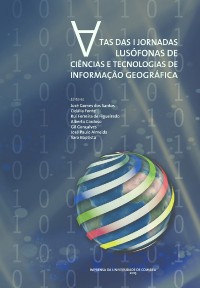Please use this identifier to cite or link to this item:
https://hdl.handle.net/10316.2/37126| Title: | Tecnologias geoespaciais na demarcação da fronteira da Guiné-Bissau | Other Titles: | Geospatial technologies on demarcation of Guinea Bissau boundary | Authors: | Nunes, Maria do Carmo Costa, Fernando Lagos Melo, Ana Raquel Morgado, Ana Maria |
Keywords: | Boundary;;GIS;;Remote sensing;;GNSS/GPS;;Guinea-Bissau.;Fronteira;;SIG;;Deteção remota;;GNSS/GPS;;Guiné-Bissau. | Issue Date: | 2015 | Publisher: | Imprensa da Universidade de Coimbra | Journal: | http://hdl.handle.net/10316.2/37053 | Abstract: | The demarcation of African boundaries still continues to be an unresolved issue, essentially
to difficulty accessing information of its delimitation. For historical reasons, the Tropical
Research Institute (IICT) concentrates a vast collection of information on the borderlands
of the CPLP countries, which comprises historical documents and spatial data, included in
field notebooks, sketches and mapping accuracy. Many official delegations have checked
the documentation, therefore it was considered important to carry out a project to implement
a Boundary Geographic Information System (BGIS), to organize boundary documents
and to investigate methodologies for the accurate location of the boundary beacons and
the borderline.
We present the preliminary results of this project, on the Guinea-Bissau border, a territory
where boundary disputes occurred, especially due to the unknown position of the beacons.
The use of geospatial technologies such as remote sensing, satellite positioning and fieldwork,
will allow the reconstruction of the boundary, in a BGIS, essential for an accurate
characterization, monitoring and management of the boundary. A demarcação das fronteiras africanas é uma questão em aberto, sobretudo, por dificuldade de acesso à informação sobre a sua delimitação. Por razões históricas, o Instituto de Investigação Científica Tropical (IICT) concentra um vasto acervo sobre fronteiras da CPLP, incluindo informação histórica e dados geográficos, em cadernetas de campo, croquis e cartografia de precisão. Delegações oficiais têm consultado essa documentação pelo que se considerou importante desenvolver um projeto1 para implementar um Sistema de Informação Geográfica de Fronteiras (BGIS - Boundary Geographical Information System), para organizar a documentação e investigar metodologias visando a localização precisa dos marcos e da linha de fronteira. Apresentam-se os resultados preliminares deste projeto, sobre a fronteira da Guiné-Bissau, território onde ocorreram disputas sobre os limites da fronteira, sobretudo por desconhecimento da posição de marcos. O recurso a tecnologias geoespaciais como deteção remota, posicionamento por satélite e a trabalhos de campo, permitirá a reconstituição da linha de fronteira, no BGIS, essencial para uma fidedigna caracterização, monitorização e gestão da fronteira. |
URI: | https://hdl.handle.net/10316.2/37126 | ISBN: | 978-989-26-0983-6 (PDF) | DOI: | 10.14195/978-989-26-0983-6_51 | Rights: | open access |
| Appears in Collections: | Atas das I Jornadas Lusófonas de Ciências e Tecnologias de Informação Geográfica |
Files in This Item:
| File | Description | Size | Format | |
|---|---|---|---|---|
| cap_tulo_51._tecnologias_geoespaciais_na_demarca__o.pdf | 1.36 MB | Adobe PDF |  |
Items in DSpace are protected by copyright, with all rights reserved, unless otherwise indicated.
